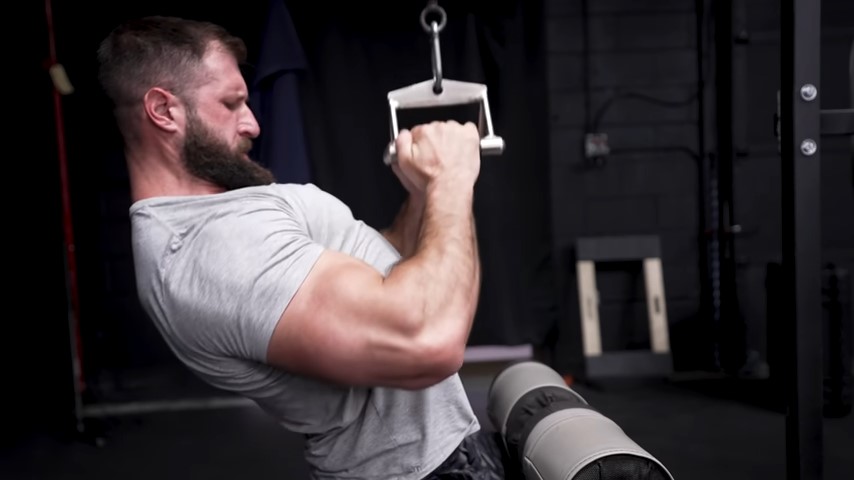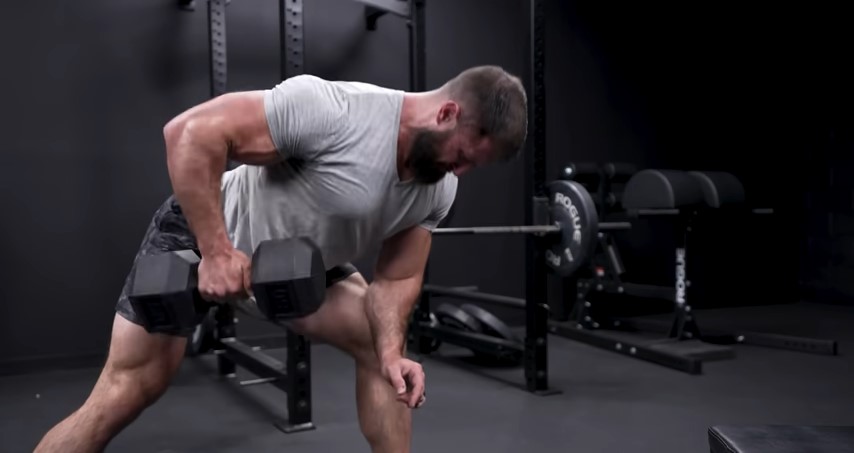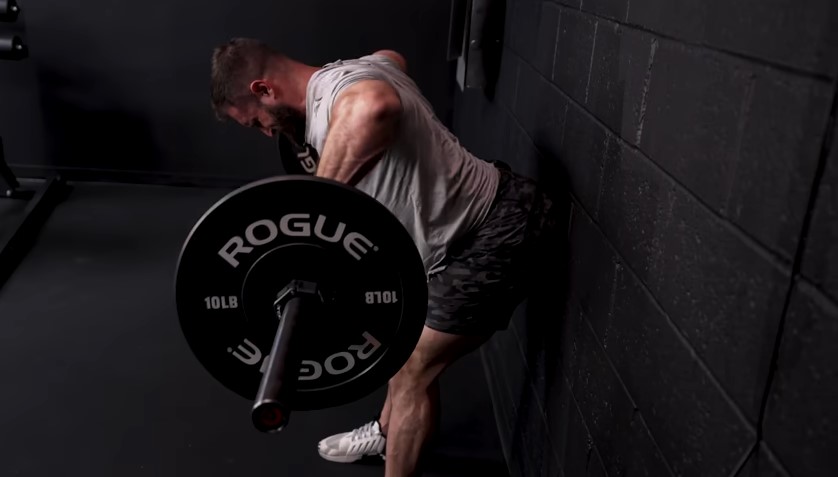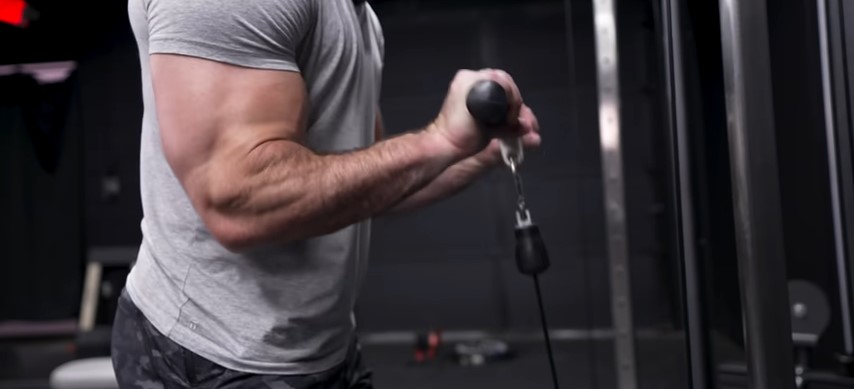Welcome to the Pull day of our PPL split! Today, let’s shift the focus to exercises that target those pulling muscles – think back, biceps, and rear delts. While Push focuses on pressing movements, Pull is all about pulling motions such as rowing, pulling and curling. This workout is the perfect complement to your Push day, balancing out your upper body training and making sure you’re building strength and muscle all around.
An important thing to remember on a back day – avoid exercises that don’t contribute significantly to your back development. As time is precious, you need to make sure you have a solid mind-muscle connection.
Remember to pay close attention to your form and technique to maximize your gains while minimizing the risk of injury. So grab those weights, hit the machines, and get ready to crush your Pull workout!
The Lat Pulldown
When you’re hitting the lat pulldown machine, you’re targeting some major muscle groups in your back, like the latissimus dorsi, as well as giving your biceps and rear delts a good workout.
First, take a seat and secure your knees under the pads. Then, grab the bar with your hands a bit wider than your shoulders. Keep your chest up and pull the bar down towards your chest, focusing on squeezing those shoulder blades together at the bottom. Feel the burn in your back as you pull, then slowly return to the starting position. Remember to keep the elbow in a fixed position and work against the movement.

So next time you’re in the gym, don’t skip the lat pulldowns. They’re a great exercise for building a strong, defined back and leveling up your upper body strength.
Benefits of Single Arm Movement
- Balanced Muscle Growth: By targeting each arm separately, you can make sure that both sides of your body get the same attention. This helps prevent any muscle imbalances and gives you a more symmetrical look.
- Core Stability: Many single-arm exercises need you to engage your core muscles to stay balanced. This not only helps strengthen your core but also improves your posture.
- Fuller Range of Motion: Single-arm movements often let you move your arm through a bigger range of motion than exercises where both arms work together. This can help with flexibility and get your muscles working better.

- Mix Things Up: With loads of different variations and equipment options, like dumbbells or resistance bands, single-arm workouts can keep your routine fresh and interesting.
Barbell Exercises
Adding barbell exercises to your Push day in the Push-Pull-Legs (PPL) split can really take your upper body training to the next level. Barbell movements offer a ton of benefits such as allowing you to lift heavier weights and work different muscles at once. The key is keeping those elbows high throughout each rep, really hitting those lower lats.
Here’s a neat trick: plant your butt against the wall before you start. This little adjustment gives you stability and keeps your focus on those lower lats. By keeping your body anchored, you can concentrate solely on working those muscles without straining your lower back.

These deliberate movements not only work your muscles but also sharpen your mind-muscle connection. Mixing things up with different barbell variations can really amp up your workout. Try the incline bench press or the close-grip bench press to hit specific areas of your chest and triceps. Adjusting the angle and grip width lets you target different muscles, keeping your training well-rounded.
Of course, safety comes first, so always focus on good form and technique. Start with a weight you can handle comfortably, then gradually increase it as you get stronger.
Deadlifts for Upper Body Strength
Including deadlifts into your Push day of the Push-Pull-Legs (PPL) routine might seem a bit out of the box, but it comes with some great perks for your overall strength and muscle growth.
Deadlifts are famous for targeting the posterior chain, which includes muscles like the hamstrings, glutes, lower back, and traps. While they’re usually connected with the leg day, deadlifts also involve your core, shoulders, and grip strength, giving you a solid full-body workout.
To slot deadlifts into your Push day, try doing them after your main upper body moves, like bench presses and overhead presses. Start with lighter weights and really nail down your form and technique before you start upping the weight.
Two Bicep Exercises
As we finish up the workout, we’re hitting two bicep exercises and doing a bit of forearm work before we’re done. One big thing about the push-pull-legs routine is that it really tests your mental strength. You’ve got to keep pushing yourself, and if you’re not feeling the struggle halfway through, you might need to step up the intensity. Here’s what you can do:
- Start by doing reverse grip cable curls with a straight bar, going all out until you can’t do any more. Then smoothly switch to regular curls, pushing yourself to the max again, targeting your biceps.
- Finish off with single-arm dumbbell curls. Use your other arm like a preacher bench to balance things out. Keep switching sides until you’re done.

You’ll know you’re finished when you’re really feeling the burn and can only do a couple more reps. That means you’ve given your biceps a solid workout and pushed them to their limits.
Common FAQs
Should I prioritize compound exercises or isolation movements on pull day?
Starting your pull day with compound exercises like pull-ups, rows, and deadlifts is smart because they engage multiple muscle groups and makes you lift heavier weights. Then, include isolation exercises such as bicep curls and rear delt flyes to focus on specific muscles. This combination can give you a well-rounded and effective workout for your back and arms.
I’m new to pull-ups and can’t do many. What are some alternatives?
No worries! If pull-ups are challenging, try assisted pull-up variations using resistance bands or a pull-up assist machine. You can also opt for lat pulldowns, inverted rows, or assisted chin-ups until you build up your strength.
How important is it to work on grip strength during pull day workouts?
Grip strength is important for maintaining proper form and safely lifting heavier weights during pull exercises. You can also add grip-strengthening exercises like farmer’s walks, static holds, or using fat grip attachments to improve your grip strength over time.
Should I do face pulls on pull day or push day?
Face pulls are mainly a rear deltoid exercise and are typically included on pull day since they involve pulling the resistance towards you. They complement other back and rear deltoid exercises like rows and reverse flyes.
How can I prevent overtraining on pull day?
Listen to your body! Make sure you’re getting enough rest between sets, staying hydrated, and fueling your body with quality nutrition. Also, it is important to include enough recovery plans such as foam rolling, stretching, and getting enough sleep so you don’t over train and can promote muscle growth.









